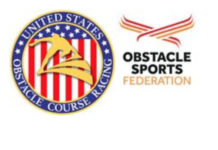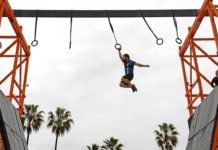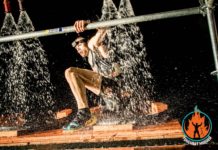
As an American of Scottish descent, I’ve been known to wear a kilt on occasion and when athletic kilts became a thing, I wanted to run in one too. My first kilt was a Sportkilt, so you’ll hear me compare it to the JWalking Designs Running Kilt that I’m testing for this review. When Obstacle Racing came along I wanted to wear a kilt for my show Inside Obstacle News as a kind of personal brand. I don’t wear a kilt on the show anymore, but I do like to have it at races for the ease of changing in public, so when Paul, from Mud and Adventure, asked me to try a new running kilt from JWalking Designs, I jumped at the chance.
Fit and Design
They made this kilt out of a recycled PET material and bit of spandex, making it eco-friendly, sweat-wicking, light, and soft. The red plaid tartan design of the kilt made it obvious that I wasn’t just wearing a skirt, but lacked the traditional pleats across the back typically used in a full eight-yard kilt. Instead, the kilt used a couple of well placed folds to create flexibility and flow in the material. I ordered a size Large, because of my long legs and 35 inch waist, but a Medium arrived in the mail. Luckily, the Medium fit perfectly and even when I pulled the waist-band up high, the hem still landed just on the top of my knees (kilts are meant to be worn above the hips, not low like jeans). Unlike the Sportkilt’s velcro closure for the waistband, the JWalking design included a closed elastic loop in the waistband to create a snug, continuous loop of fabric with the overlapping front panels open at the bottom and sewn down at the top.

Tackling Obstacles
Before I headed out for my run, I tested out the kilt on my home obstacle course. I found the kilt comfortable whether jumping, climbing, or even crawling. I wanted to test this kilt at the OCR World Championships this weekend, and even though it arrived in the mail in time, other obligations forced me to cancel my race plans, so I’ll have to wait to test it in the mud. I liked the zipper pocket in the back, which fit my Samsung S4 (a pretty big phone), and would also fit gels, keys, and a wallet, though I didn’t take them on this run. Itching to test out my new duds, I headed out for an easy four-miler.
On the Run
The first rule of running with a kilt: Bodyglide. This time around, I forgot to lube up and by mile three my tree trunks had chaffed a nice raw spot on my inner thighs. In fact, this is a pretty normal occurrence for me, especially with shorts, so I don’t blame the kilt. Despite my forgetfulness, the kilt performed well. The light fabric wicked sweat well, with just enough material to keep the chill of the northeastern fall winds off of my legs. An occasional gust blew open the front folds a number of times, so I will use a kilt pin next time, and since I wasn’t running in the traditional commando style, I didn’t have modesty issues. Overall, the kilt was a joy to run in, even if I got a few looks from my Amish neighbors.
The Nitty Gritty
I liked this kilt and I’ll continue using it for training. You’ll see me wearing before and after my next race, because I really like using a kilt to change in public. I generally race obstacles in a speedo, so I don’t think I’ll be getting this running kilt muddy, but based on the material and the design I believe it would perform well without getting soggy or weighing you down in the mud and water of an obstacle course. Compared to the Sportkilt it costs less, has a better/bigger pocket, and breathes a little better in warm weather. The velcro waist closure of the Sportkilt is a little more forgiving if you order the wrong size or lose weight (due to all that running you’re doing!), but the elastic waistband of the JWalking design fit well, so I have no clear winner there. If you love running in kilts, give the JWalking Men’s Running Kilt a try, and if you’ve never tried it you should. Don’t worry ladies, JWalking Designs didn’t forget about you! They have awesome Women’s Running Skirts too, including Rad Purple Plaid!














































